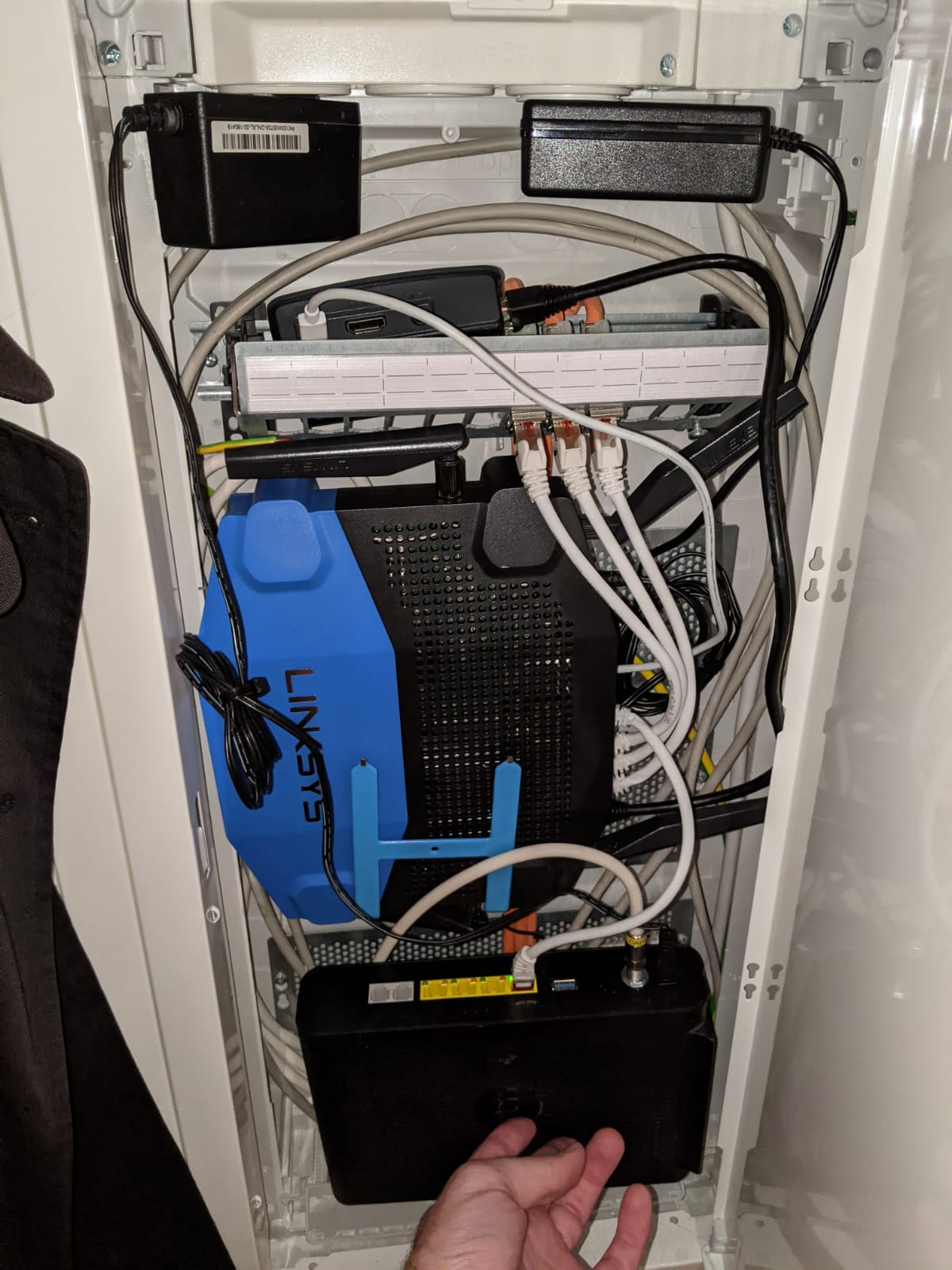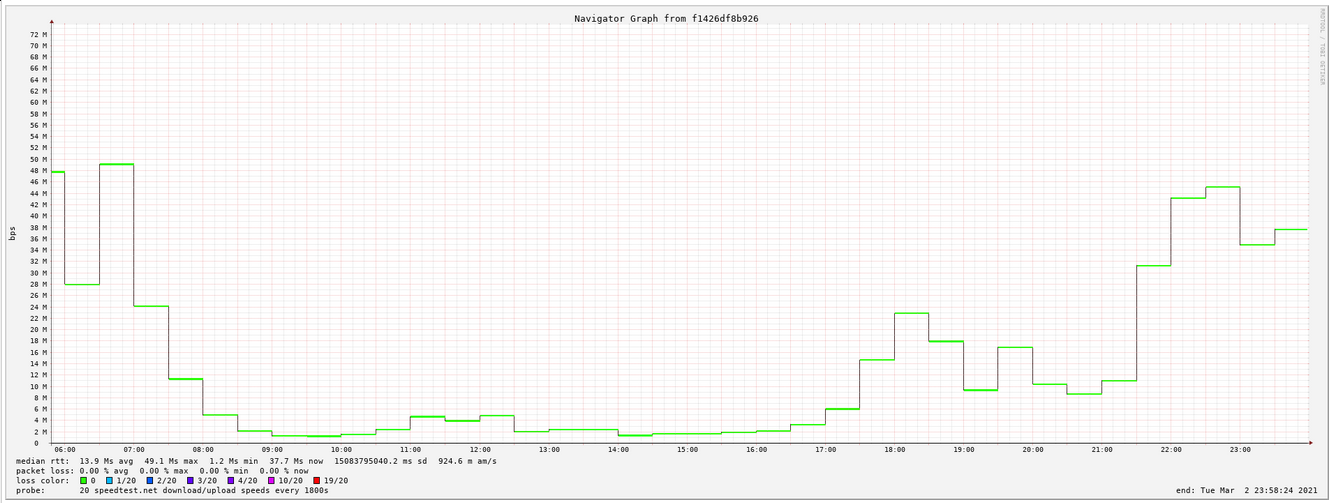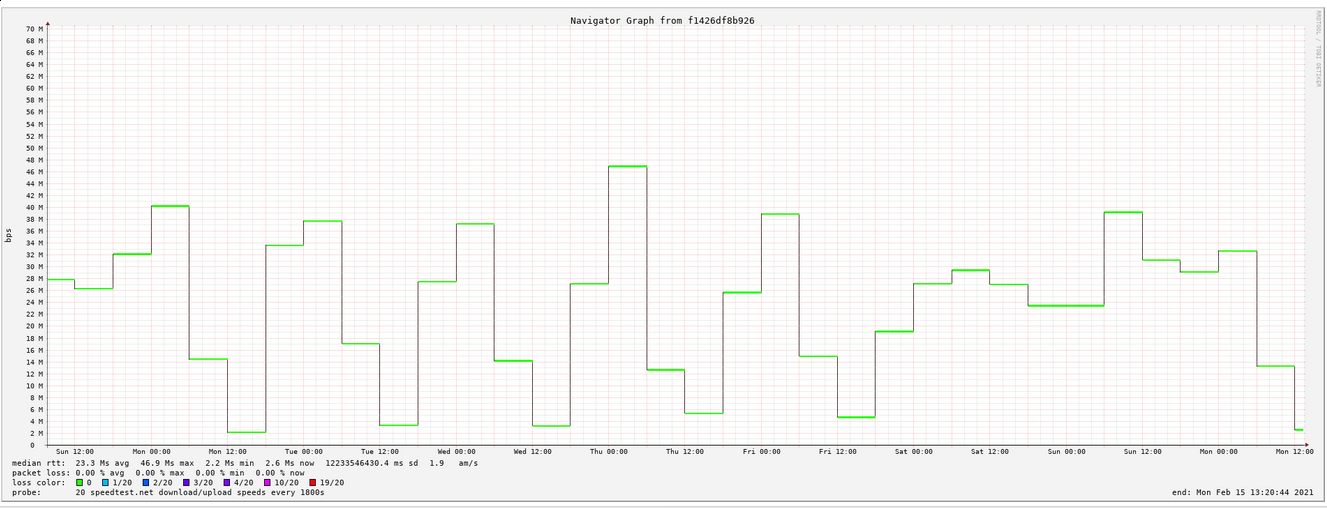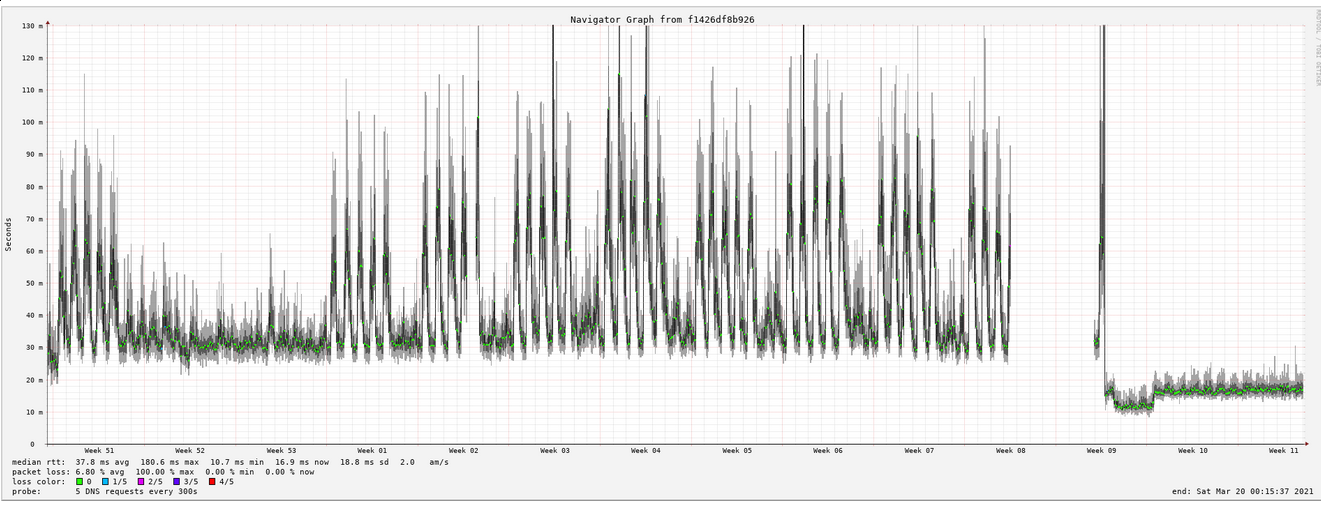Moving from Cable to DSL
Cable connections suck. I didn’t really figure this out until recently.
Cable to Cable
I recently moved, from an area with an older population and retirees to an area with much higher density and younger population, a lot of whom have had to work from home in the pandemic.
My GF already had a similar cable connection to what my old place had before I moved in with her - and as I hadn’t had many major issues in my old place, I was happy with it until I noticed the differences that population density and poor capacity planning can make.
Grand summary of that move: I went from getting my 200 down / 50 up connection (in my old place) to getting 200 down / 2-50 up erratically as well as an arbitrarily restarting cable modem.
Parts were my fault
Basically, with cable modems, the signal strength is calibrated to the expected attenuation of splitters in the house. I had started using the incoming cable in the patch panel directly in order to hide the modem and… be able to use my patch panel and my own router (see image).

What I failed to notice is that:
- The splitter IN the patch panel to distribute the cable connection throughout the house has some losses
- The splitters in each room (in the wall plate) further reduce connection strength
- The other side (the ISP) has the line calibrated to that expectation (or so I’ve understood)
These facts together meant signal strengths were higher than expected (and therefore out of spec)
I’m jumping ahead a little here, but: A technician came out twice to remedy this (once by moving it to a non-patch-panel location and providing a new modem, and once by adding splitters just to get it to the same level from within the patch panel because I stubbornly moved it back after the connection speeds didn’t improve). However, even after my signal was within spec I still had slow uploads, though at least the modem restarts were gone.
Reasoning
I like my upload speeds - both for better video calling as well as making it easier to attach files etc. I also self-host a lot of things, so upload speeds matter as that is the download speed on the other side, and 2 mbps is not acceptable.
Browsing the internet while VPN’ing to home is bottlenecked by the slowest of upload/download pair.
Monitoring
Back to where we were: after a few speed issues and speed tests I noticed that, during the workday my upload and pings were slow, but downloads were mostly fine. During the evenings and weekends I’d get my full 200 down 50 up.
I looked in to how to do automated speedtesting and found Smokeping as a viable option, so I spun it up and started gathering data. You can see in the graphs below that there’s a pattern every weekday.
 |
|---|
| One Crappy Day: Upload |
You can see from the larger graphs that it’s quite clearly a capacity planning and/or interference issue - as the upload speeds cheered up during christmas.
 |
|---|
| One Crappy Week: Upload |
 |
|---|
| Longer term: Upload (note christmas improvement) |
Cable to VDSL
Asking around
I asked my neighbors, and all of them with the same provider had upload speed issues during the work day - anyone with a download package faster than 200 mbps also didn’t get their package speeds, instead getting around 170 mbps like myself (though I would say that’s expected). Anyone with the DSL connection had no complaints.
DSL only became available in the area since 2018 or so. So most residents here will already be tied in to their cable connection - this also means that there’s less demand for DSL in the area, so likely less congestion.
The Switch
Contracts in Germany are a little complicated - you can effectively only cancel your contract every year (you can inform them at any time minus the last 3 months though). You can also cancel a contract no-questions-asked within the first two weeks.
Luckily our cable contract would be up for retirement in 5-6 months, so it would be a good time to test out a new connection to see if a switch made sense. And if it didn’t we could just cancel it in the first two weeks and stick to our old connection.
Cable and DSL are also entirely different infrastructures, so we could hook up both simultaneously to switch between them if there were any issues.
Night and Day
The technician appeared at around 3 PM to set up the connection - which meant I could test the difference on a workday. Unfortunately I could switch only later in the day so I wouldn’t interrupt my workday or my GF’s, but I did a quick speedtest and the results were promising.
The cutover
I use bridge mode on my routers, so as to give my own router the public IP of the connection and better control with openwrt - this meant that for the new connection I had to figure out PPPoE settings and how openwrt handles VLAN tagging (plus some openwrt bug where changes don’t necessarily take effect correctly). So my effective cutover was 2 hours or so.
Everything was significantly better.
Speeds/Pings
Speeds were significantly improved, while the DSL package was technically 175 down and 40 up, we get 250 down and 40 up consistently.
 |
|---|
| Upload speed old connection to new (self explanatory) |
Ping times dropped across the board (lowest ping time I used to see was 20 ms, now i can see 5ms at times.)
CS:GO ping times dropped from 50-60 ms down to 23-25.
Conclusions
Cable doesn’t tend to provide good ping times, regardless of capacity planning or congestion. This was noted in one of the “best connection” guides for Germany I can’t find now - even noting that gamers would enjoy DSL for the ping times. This is however a more recent development as higher speed DSL (supervectoring, etc) was not available until 2018.
Congestion can also change from area to area, I didn’t have problems that annoyed me until I had more issues that made them obvious.
I now have a significantly more consistent connection - beating out the previous connection on every relevant (to me) metric.
Caveats
Performance of these ISPs change from area to area - depending on infrastructure upgrade rollouts as well as congestion, demographics, etc - as well as huge changes in usage patterns after we all started working from home.
However, I’m quite sure cable will never get below ~20 ms in almost every circumstance. It’s a backported technology that has too many caveats IMO.
Bonus
As an added bonus - here are the DNS lookup times over the whole duration of recording - you can see the pattern over christmas, the regular daily slow-downs and jitter, and one week of no data that was my fault before switching over, and the significant improvements after the cutover in both overall time as well as noise/jitter/deviation.
 |
|---|
DNS resolution to 8.8.8.8 over the entire recording period |
